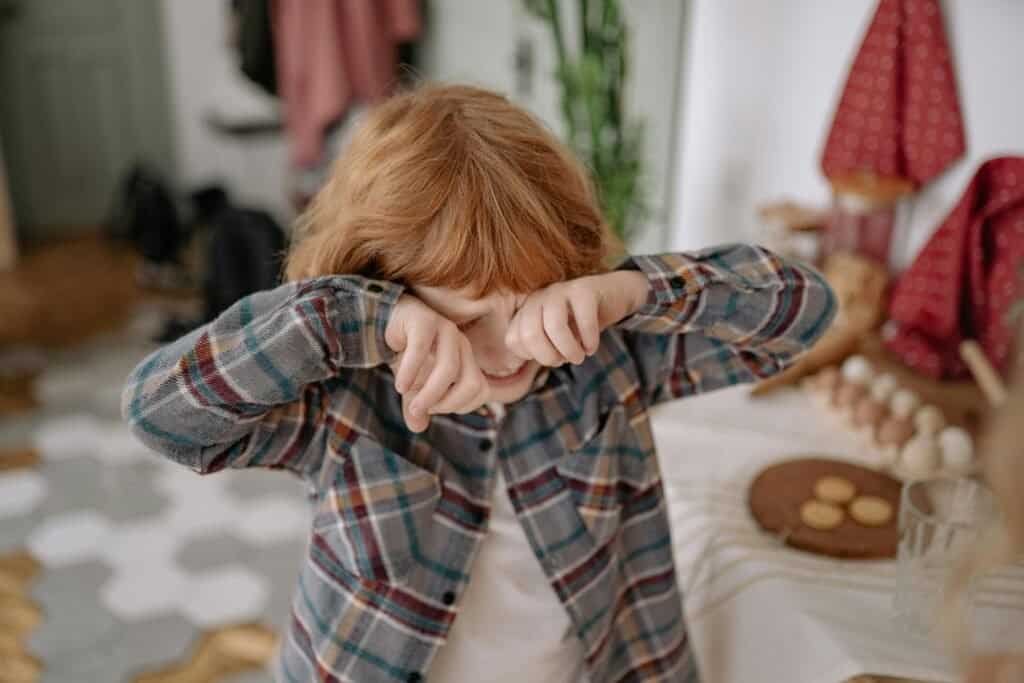
Anxiety is the anticipation of a threat that hasn’t happened yet. In children it doesn’t always look the way we expect it to. While adults may express anxiety through worry or physical symptoms, children often show it through behavior—clinginess, tantrums, meltdowns, or an overwhelming need for reassurance. When it comes to childhood OCD (Obsessive Compulsive Disorder), the signs can be confusing or easily mistaken for difficult behaviour, perfectionism, or even stubbornness. However, the anxieties are driven by intense, intrusive thoughts and compulsive rituals that children don’t know how to explain.
What Does Anxiety or OCD Look Like in Children?
Kids don’t always say, “I’m anxious.” Instead, anxiety can show up in very specific ways that reflect the child’s developmental stage and imaginative inner world. Some common fears include:
- Germs or contamination (e.g., needing to wash hands repeatedly or avoiding certain places)
- Health anxiety (e.g., fears of vomiting, choking, or “what if I get sick?”)
- Separation anxiety (e.g., refusing to sleep alone, clinging during drop-off)
- Fear of harm (e.g., needing to check that doors are locked, asking repeatedly if everyone is safe)
- Need for things to be “Just Right” (e.g., re-writing schoolwork over and over until it feels “right”)
Often, these fears lead to reassurance-seeking. A child might repeatedly ask, “Am I okay?” or need a parent to say things a certain way, over and over. These are not simply habits—they’re symptoms of underlying anxiety that feel very real and distressing to the child. Constant reassurance and fulfilling compulsive rituals can lead to burnout within the family. It becomes exhausting for parents, as the constant cycle of reassurance-seeking and accommodating the child’s anxiety can feel never-ending. Over time, this leads to a household where everyone feels on edge—parents, siblings, and the child alike. The emotional toll can be significant. This dynamic can create a tense environment, where the focus shifts from nurturing growth to merely surviving the day-to-day.
Why Parental Accommodations Can Make Anxiety Worse
When a child is anxious, it’s natural for parents to want to protect them. You might help them avoid feared situations, offer constant reassurance, or adjust your own routines to keep their anxiety at bay.
While this provides short-term relief, it can unintentionally reinforce the idea that the child can’t handle discomfort on their own. Over time, this leads to more anxiety, more dependence, and more accommodation. In the SPACE (Supportive Parenting for Anxious Childhood Emotions) program, accommodations refer to changes parents make to help their child avoid anxiety or distress. This is especially true with OCD, where accommodating rituals may feel like the only way to keep peace at home—but in doing so, the OCD grows stronger.
What Is the SPACE Program—and Why Is It So Effective?
The SPACE program, developed at the Yale Child Study Center by Dr. Eli Lebowitz, is a parent-based treatment specifically designed to reduce childhood anxiety and OCD—not by putting pressure on the child, but by supporting the parent to make gentle, supportive changes.
Rather than focusing on controlling the child’s behavior, SPACE helps parents:
- Respond to anxiety with validation and confidence instead of accommodations
- Set healthy, loving boundaries around anxious thoughts & behaviors
- Increase the child’s ability to tolerate distress and build internal resilience
- And perhaps most importantly: your child does not need to be actively involved in therapy for this to work. This is one of the only evidence-based treatments that can help children through changes parents make alone.
What You Can Do?
If your child is constantly worried, stuck in rigid routines, or struggling to face everyday situations, there is hope—and it starts with you. Here’s how to begin:
- Reflect on the accommodations you’re currently making (e.g., answering repeated questions, avoiding places or situations)
- Reach out for professional support—working with a therapist trained in SPACE can help guide this process
If you’re interested in learning more about childhood anxiety, OCD, and how you can support your child in managing their fears, reach out. Together, we can work toward fostering resilience and emotional well-being for both you and your child.